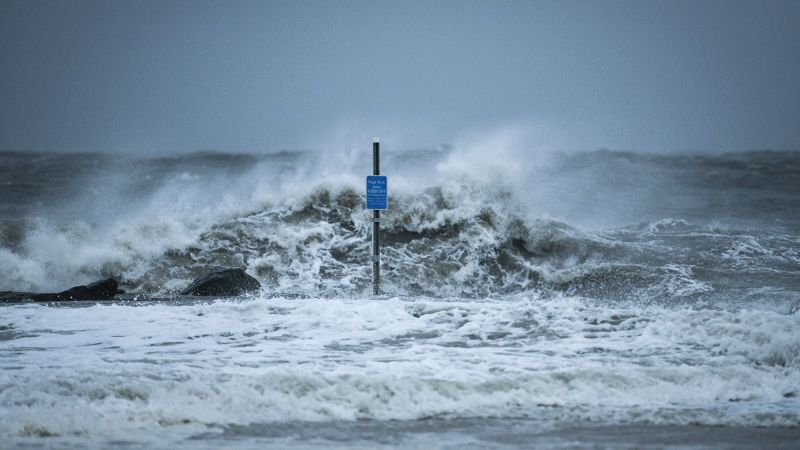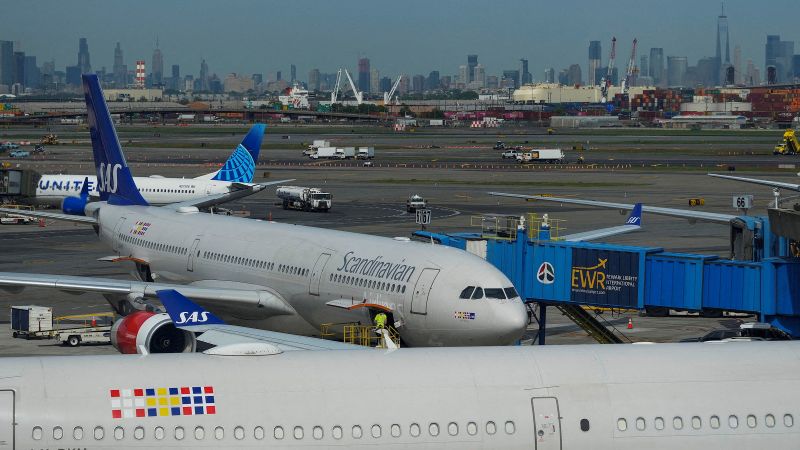Slowing Ocean Currents: Supercharging US Sea Level Rise

Welcome to your ultimate source for breaking news, trending updates, and in-depth stories from around the world. Whether it's politics, technology, entertainment, sports, or lifestyle, we bring you real-time updates that keep you informed and ahead of the curve.
Our team works tirelessly to ensure you never miss a moment. From the latest developments in global events to the most talked-about topics on social media, our news platform is designed to deliver accurate and timely information, all in one place.
Stay in the know and join thousands of readers who trust us for reliable, up-to-date content. Explore our expertly curated articles and dive deeper into the stories that matter to you. Visit Best Website now and be part of the conversation. Don't miss out on the headlines that shape our world!
Table of Contents
Slowing Ocean Currents: Supercharging US Sea Level Rise
The Atlantic Meridional Overturning Circulation (AMOC) is slowing, and the implications for the US East Coast are alarming. A new study reveals a concerning link between the weakening of this crucial ocean current system and accelerated sea level rise along the US coastline. This isn't just a future threat; it's a phenomenon already impacting coastal communities and demanding immediate attention.
The AMOC, often described as the "ocean conveyor belt," plays a vital role in regulating global climate. It transports warm water from the tropics northward, influencing weather patterns and sea levels across the Atlantic. Recent research indicates a significant slowdown in the AMOC, raising serious concerns about its potential consequences.
Why is a slowing AMOC accelerating sea level rise?
The slowdown of the AMOC has a cascading effect. When this crucial current weakens, it disrupts the natural balance of heat distribution in the Atlantic. This leads to:
- Increased water volume: Warmer waters expand, directly contributing to higher sea levels. The slowdown of the AMOC intensifies this effect, particularly along the US East Coast.
- Altered ocean currents: The AMOC's influence extends far beyond its direct path. Changes in its strength can alter other ocean currents, impacting coastal water levels in unexpected ways.
- Enhanced storm surge: A weaker AMOC can potentially exacerbate the impact of storm surges, leading to more frequent and severe coastal flooding.
The East Coast's heightened vulnerability:
The US East Coast is particularly vulnerable to the consequences of a slowing AMOC. The region is already experiencing accelerated sea level rise, a trend projected to worsen significantly in the coming decades. This poses a considerable threat to coastal infrastructure, ecosystems, and communities. Cities like Miami, Boston, and New York are facing increased risks of flooding and erosion.
What does this mean for the future?
The implications are far-reaching and necessitate immediate action:
- Increased coastal erosion: Higher sea levels and stronger storm surges will exacerbate coastal erosion, threatening homes, businesses, and vital infrastructure.
- Displacement of populations: Rising sea levels could force the displacement of millions of people living in low-lying coastal areas.
- Economic disruption: The damage to coastal infrastructure and the disruption to coastal economies will have significant economic consequences.
The need for urgent action:
Understanding the connection between a slowing AMOC and accelerated sea level rise is crucial for developing effective adaptation strategies. This requires:
- Investing in coastal protection measures: Strengthening seawalls, restoring coastal wetlands, and implementing other adaptation measures are essential to mitigate the impacts of sea level rise.
- Reducing greenhouse gas emissions: Addressing the root cause of climate change – greenhouse gas emissions – is paramount to slowing the rate of AMOC decline and mitigating the impacts of sea level rise. This involves transitioning to renewable energy sources and implementing policies to reduce carbon emissions.
- Improved monitoring and research: Continued research and monitoring of the AMOC and its effects on sea level rise are crucial for informing effective adaptation and mitigation strategies.
The slowing of the AMOC is not just an environmental concern; it’s a critical issue with significant societal and economic implications for the US East Coast and beyond. Addressing this challenge requires a concerted global effort focused on both adaptation and mitigation. We need to act now to protect our coastlines and communities from the devastating effects of rising sea levels. Learn more about the . (Link to a relevant NOAA page would go here)

Thank you for visiting our website, your trusted source for the latest updates and in-depth coverage on Slowing Ocean Currents: Supercharging US Sea Level Rise. We're committed to keeping you informed with timely and accurate information to meet your curiosity and needs.
If you have any questions, suggestions, or feedback, we'd love to hear from you. Your insights are valuable to us and help us improve to serve you better. Feel free to reach out through our contact page.
Don't forget to bookmark our website and check back regularly for the latest headlines and trending topics. See you next time, and thank you for being part of our growing community!
Featured Posts
-
 Blackouts And Delays At Newark Airport Inside The Atc Crisis
May 18, 2025
Blackouts And Delays At Newark Airport Inside The Atc Crisis
May 18, 2025 -
 Japan Seeks Extradition Of British Citizens Linked To Tokyo Jewellery Robbery
May 18, 2025
Japan Seeks Extradition Of British Citizens Linked To Tokyo Jewellery Robbery
May 18, 2025 -
 Al West Bottom Feeders Angels Season Tanking Amid Jansens Poor Performance And Injuries
May 18, 2025
Al West Bottom Feeders Angels Season Tanking Amid Jansens Poor Performance And Injuries
May 18, 2025 -
 Mlb Season At The Halfway Point 7 Startling Statistical Insights
May 18, 2025
Mlb Season At The Halfway Point 7 Startling Statistical Insights
May 18, 2025 -
 Assisted Dying Bill Mps Prepare For Crucial Debate Following Major Amendments
May 18, 2025
Assisted Dying Bill Mps Prepare For Crucial Debate Following Major Amendments
May 18, 2025
Latest Posts
-
 Winning Strategies For Brazilian Themed Slot Games
May 18, 2025
Winning Strategies For Brazilian Themed Slot Games
May 18, 2025 -
 Consecutive Win Number 12 Joe Ryans Pitching Propels Minnesota Twins
May 18, 2025
Consecutive Win Number 12 Joe Ryans Pitching Propels Minnesota Twins
May 18, 2025 -
 Legal Update Dawn Richard Follows Cassie Venturas Testimony In Diddys Trial
May 18, 2025
Legal Update Dawn Richard Follows Cassie Venturas Testimony In Diddys Trial
May 18, 2025 -
 Cassies Assault The Disturbing Texts Sent By Diddy Following The Incident
May 18, 2025
Cassies Assault The Disturbing Texts Sent By Diddy Following The Incident
May 18, 2025 -
 Kakegurui Netflix A Guide To The Actors And Their Roles
May 18, 2025
Kakegurui Netflix A Guide To The Actors And Their Roles
May 18, 2025
